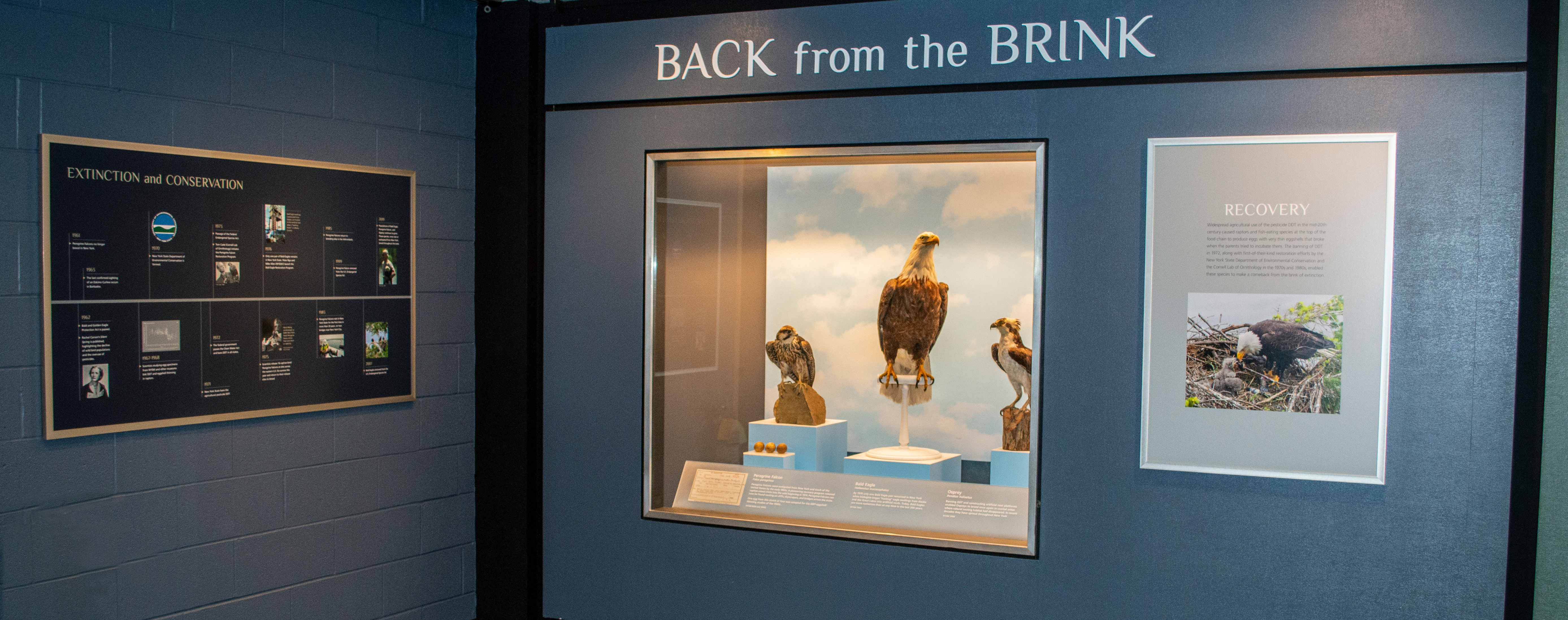Extinction
For some species, the conservation laws that protect wild bird populations came too late. Habitat loss and overhunting for food or feathers resulted in the extinction of these birds that were once native to New York. Their loss reminds us that humans are capable of exterminating even widespread and abundant species.
The New York State Museum ornithology collection includes specimens of several North American species and subspecies that have become extinct in the last 150 years.

Recovery
Widespread agricultural use of the pesticide DDT in the mid-20th century caused raptors and fish-eating species at the top of the food chain to produce eggs with very thin eggshells that broke when the parents tried to incubate them. The banning of DDT in 1972, along with first-of-their-kind restoration efforts by the New York State Department of Environmental Conservation and the Cornell Lab of Ornithology in the 1970s and 1980s, enabled these species to make a comeback from the brink of extinction.

Timeline: Extinction Events & Conservation Efforts
1791
In one of the first efforts to save a species from extinction, a bill entitled “An Act for the preservation of heath-hen and other game” is introduced in the New York State Legislature.
1900
Last remaining wild Passenger Pigeon is shot in Ohio.
1905
The National Audubon Society is incorporated.
1918
Migratory Bird Treaty Act passes, protecting all non-game bird species in the United States.
1961
Peregrine Falcons no longer breed in New York.
1963
The last confirmed sighting of an Eskimo Curlew occurs in Barbados.
1971
New York State bans the agricultural pesticide DDT.
1972
The federal government passes the Clean Water Act and bans DDT in all states.
1975
Scientists release 16 captive-bred Peregrine Falcons at sites across the eastern U.S. Six survive the year and return to their release sites to breed.
1985
Peregrine Falcons return to breeding sites in the Adirondacks.
1999
Peregrine Falcon removed from the U.S. Endangered Species list.



















